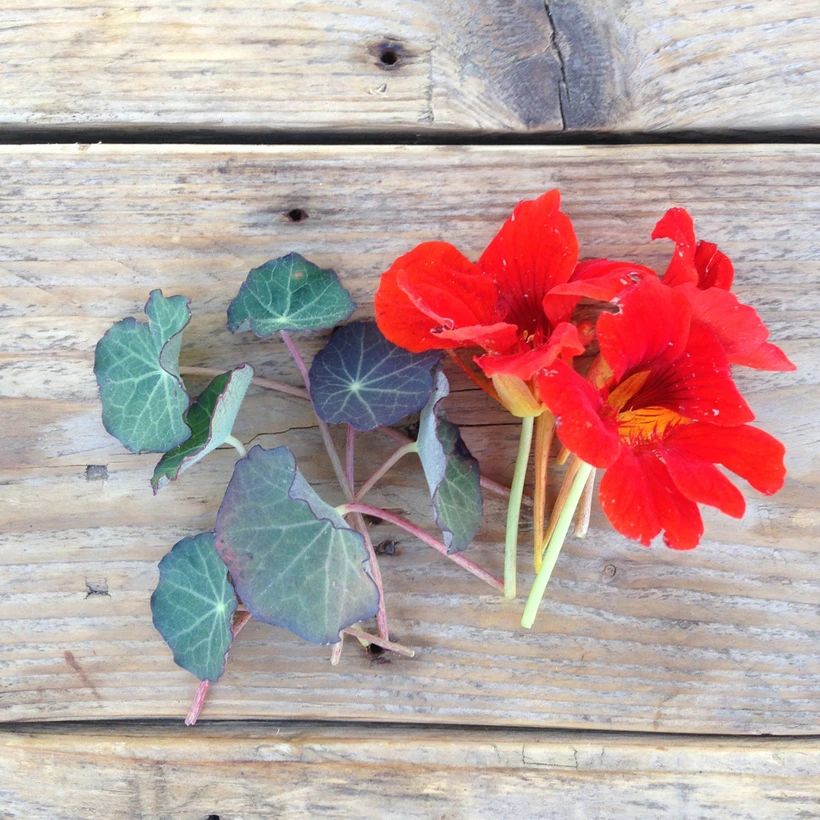Nasturtium ‘Blue Pepe’
£4.00
Nasturtium ‘Blue Pepe’ is a unique European variety bred specifically for culinary use. The name is derived from its wonderful steel-blue leaves with purplish undersides.
The flowers themselves are also edible and their bright-red hue makes an attractive addition to salads, as well as being perfect for garnishing stir fries. The leaves have a slightly peppery taste, reminiscent of watercress. The flavour becomes spicier when the flowers are grown in sunnier, hotter weather. The flowers are less intensely flavoured than the leaves but they add a dramatic, colourful zing to any recipe. Nasturtiums were first cultivated in Perù and were introduced to Europe by the Spanish conquistadores in the 16th century.
| Common name | Nasturtium |
|---|---|
| Latin name | Tropaeolum majus |
| Variety | Blue Pepe |
| Quantity | 10 seeds |
| Plant size | Height: 20 cm Width: 20 cm |
| Container size | Height: 20 cm Width: 20 cm |
| Companion plant(s) | Tomatoes, peppers, eggplants, radishes, cucumbers, salads |
| Planting indoors | Feb to Apr |
|---|---|
| Planting outdoors | Apr to Jun |
| Germination | 7 to 15 days |
| Harvesting | 50 to 70 days |
| Planting | 3 cm to 5 cm apart at a depth of 2 cm |
| Thinning | 5 cm to 10 cm |
| Light | Full sun to partial shade |
| Soil | Well-drained, light and moist soil |
| Watering | Regular watering, allow to dry out |
| Feeding | Not required |
| Caring | Do not fertilise because this will promote leaf growth and suppress flowering. Dead-heading or picking the flowers will prolong blooming. |
| Beneficial wildlife | Attracts bees, butterflies and birds. |
| Pests | Repels aphids, bugs and rabbits. |
| Harvesting | Pick nasturtium buds, petals and leaves in the cool morning air when the flowers have just opened. Interestingly, the more stressed the plant is, the more pungent its flavour will be. Stressed plants will lead to a more pungent flavour. |
|---|---|
| Eating | Medicinal properties: Ancient South Americans used nasturtiums as a hair-growth supplement – perhaps it’s worth a try?! How to eat: The edible flower trend has been around for a long time but has had a resurgence in recent years. These blooms are great for adding colour and a peppery flavour to salads and cold dishes. Not everybody knows, however, that nasturtium seeds are nutty and peppery, too, and can be pickled to produce what are known as ‘poor man’s capers’. |
Out of stock







